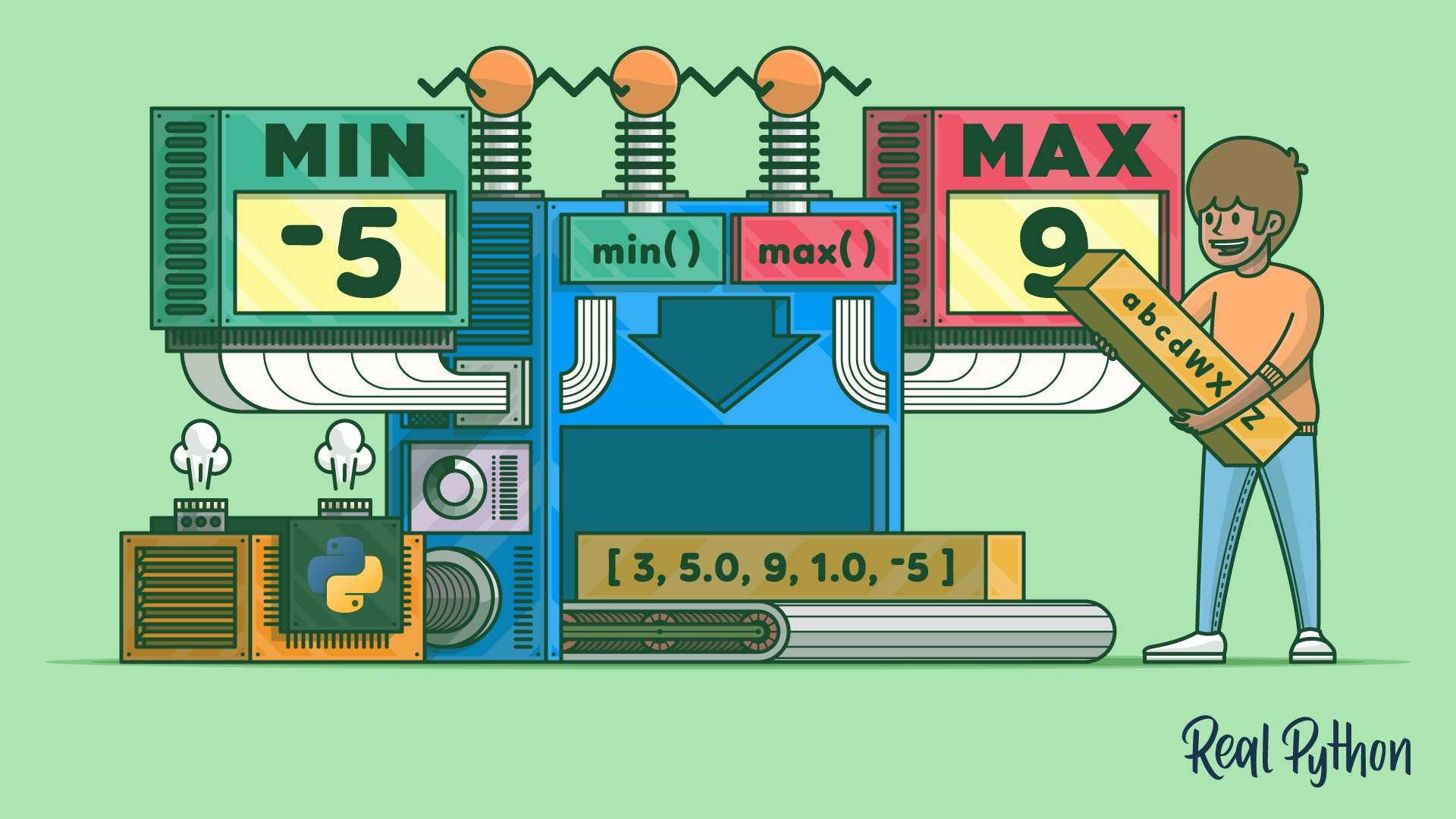Python’s built-in min() and max() functions come in handy when you need to find the smallest and largest values in an iterable or in a series of regular arguments. Even though these might seem like fairly basic computations, they turn out to have many interesting use cases in real-world programing. You’ll try out some of those use cases here.
In this video course, you’ll learn how to:
- Use Python’s
min()andmax()to find smallest and largest values in your data - Call
min()andmax()with a single iterable or with any number of regular arguments - Use
min()andmax()with strings and dictionaries - Tweak the behavior of
min()andmax()with thekeyanddefaultarguments - Use comprehensions and generator expressions as arguments to
min()andmax()
Once you have this knowledge under your belt, then you’ll be prepared to write a bunch of practical examples that will showcase the usefulness of min() and max(). Finally, you’ll code your own versions of min() and max() in pure Python, which can help you understand how these functions work internally.
To get the most out of this video course, you should have some previous knowledge of Python programming, including topics like for loops, functions, list comprehensions, and generator expressions.
What’s Included:
- 13 Lessons
- Video Subtitles and Full Transcripts
- 2 Downloadable Resources
- Accompanying Text-Based Tutorial
- Q&A With Python Experts: Ask a Question
- Certificate of Completion
Downloadable Resources:







